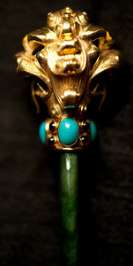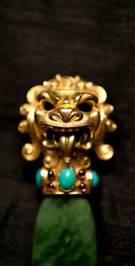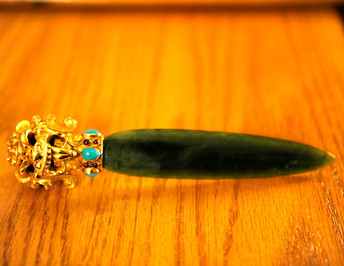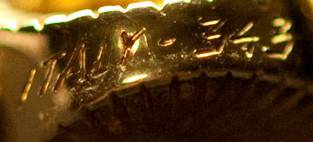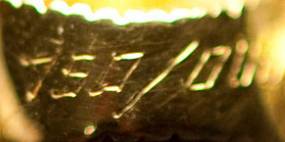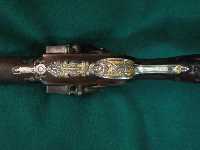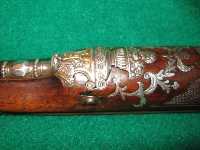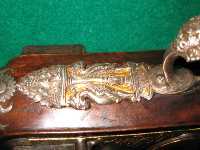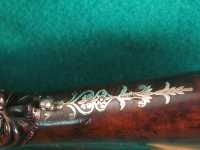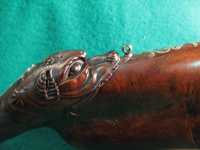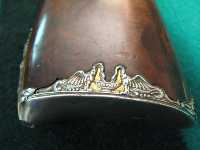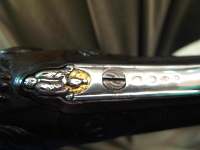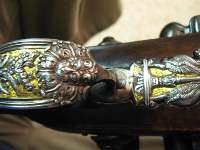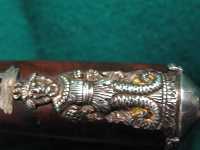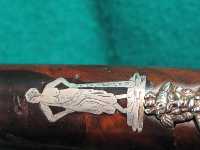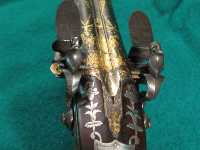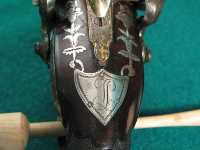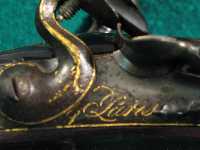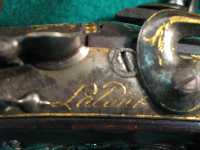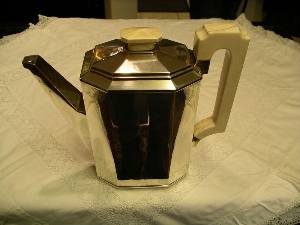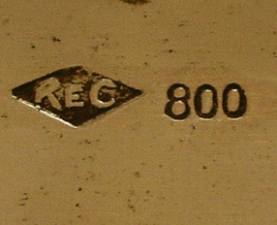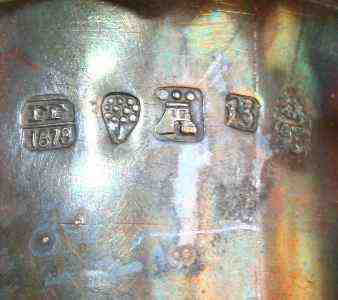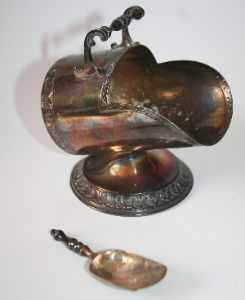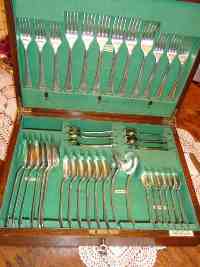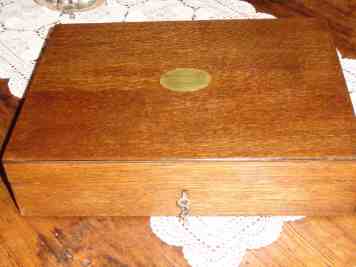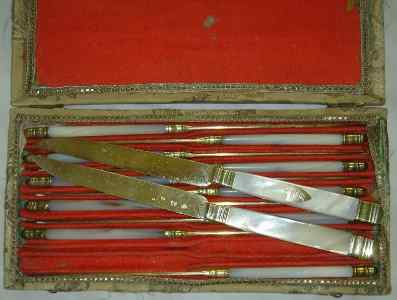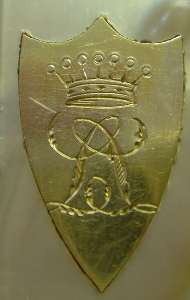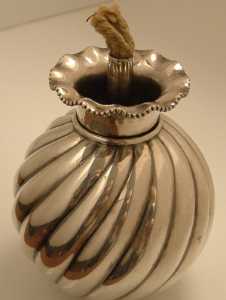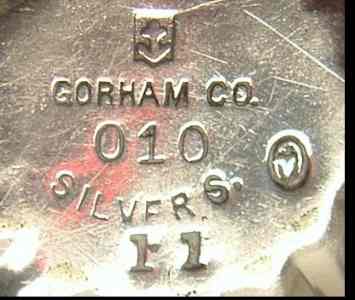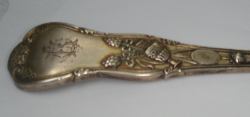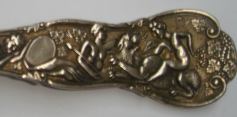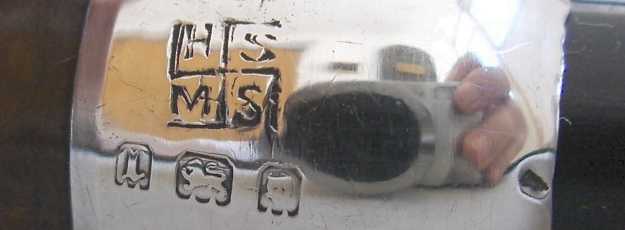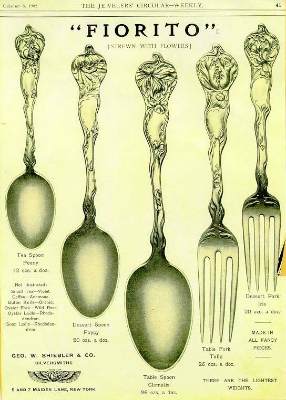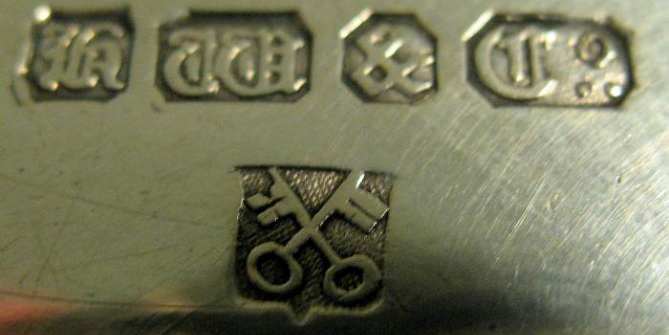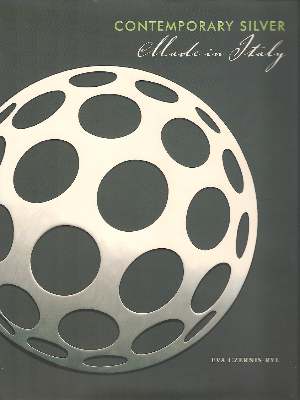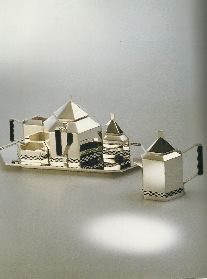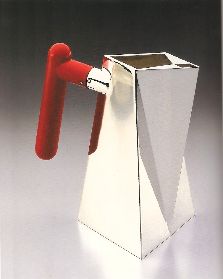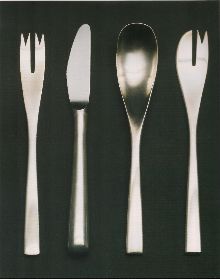 newsletter
# 90 November 2011
newsletter
# 90 November 2011www.ASCASonline.org SITE MAP
email: silverassociation@yahoo.it
YOUR GUIDE TO NOVEMBER NEWSLETTER: articles new
members members'
window
|

David McKinley presents:
|
New members
Welcome to new ASCAS members:
Hassett Auguste - England UK
David Beaumont - England UK
Stuart Burley - England UK
Vitor De Andrade Martins - Brazil
Holly Gardner - USA
Christina Hemphill - USA
John Herber - USA
Mike Lynd - England UK
Charmaine Peterson - Amatucci - USA
Corry Van Aerschot - Belgium
Vincenzo Vanarelli - Italy
Angela Wolken - USA
|
top page -
page map |
Members' Window # 90
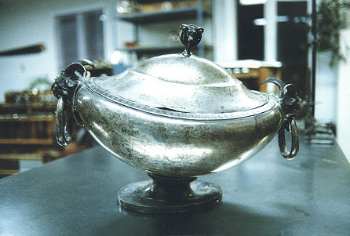
Jeffrey Herman presents:
|
Mail to ASCAS: e-mail silverassociation@yahoo.it
Steve Roberts writes:
...I'm trying to get some history on this please and the only
maker's mark is the Italy 343 on one ear of the lion.
My mother has had this since the late 60s and a number of
appraisers have never seen something like it before and referred
me to you.
Any suggestions would help tremendously.
Thank you very much.
Steve Roberts
The Italian hallmarking system is based on a mark containing
two letters (the Province code) and a number (a progressive
number identifying the silversmith) (see my web site at
http://www.silvercollection.it/italianhallmarks.html ).
In your item the province code is absent (possibly your item was
made for export).
In this case I can only make some hypothesis.
The 343 number is present only in few Provinces (meaning that
more of 343 makers were registered in that province).
The possible makers are:
AL 343 Conti Luigi - Valenza
MI 343 Vergani Mario - Milano
FI 343 Masti Gino - Firenze
VI 343 Francese Cesare - Caldogno
All these makers are not active in present days.
My best choice is AL343 Conti Luigi as the firm was active in a
district (Valenza Po) well known for gold jewelry manufacture.
Obviously this is only my personal idea and there is no
certainty.
Further information about the marks of Italian silversmiths is
available at
http://www.silvercollection.it/SILVERSMITHSAL1.html (follow
the links to find the various directories).
Giorgio Busetto
Craig Hart writes:
... I submit the hallmarks on a sterling trigger guard of an old
French shot-gun.
I was unable to find reference to most of them on your site,
only the chicken seem to correspond, slightly different.
I hope will be possible to date the shot-gun by the hallmarks,
as gun experts suggested a date from Louis XIV to Napoleon.
Any help you could give would be greatly appreciated.
Thank you,
Craig Hart
An excellent example of silver workmanship applied to a
firearm!
Three of the marks of your shot-gun are illustrated in my web
site at
http://www.silvercollection.it/frenchhallmarks.html The
presence of the not official mark of the Silversmith's
Association dates your item to c. 1795-1797.
I'm unable to identify the maker (lozenge mark with, I believe,
EJ) but I hope that someone of ASCAS members will be able to
identify the maker.
Giorgio Busetto
Michael Wink writes:
.... I have a silver tea set and I have no idea where it comes
from.
Do you still think this also could be Italian? I thought maybe
Czek or maybe Belgian......
What do you think?
I wrote also to a silver forum but unfortunately nobody posted
an answer yet.
I bought it from a German dealer (she also got this from a
German client...)..
Thanks
Michael Wink
You made the right choice when you decided to contact ASCAS
for an answer to your question.
The maker is Ricci & C, Corso Acqui 41/C, Alessandria, Italy.
This piece bears only "800" (silver fineness 800/1000) and the
"ReC" maker's mark, meaning that it was manufactured before the
introduction of the new Italian hallmarking system (1935) (see
my web site at
http://www.silvercollection.it/italianhallmarks.html ).
As the firm was active since 1931, the probable date of
manufacture lasts between 1931 and 1935 (the Art Deco style of
the coffee pot confirms this hypothesis).
A detailed article about Ricci & C. and its marks is available
in ASCAS website at
http://www.ascasonline.org/windowMARZ70.html
Giorgio Busetto
Julio P. Marini writes:
...I'm sending to you some marks for me unknown. I'm trying to
find them in internet, in my books, but nothing!
At the beginning I was thinking it's a Russian sugar bowl...
The little spoon has a space in the back where it can be put.
Thank you for helping me and for your useful and interesting
website!
Best regards,
Julio P. Marini
I am unable to identify the marks of your item.
Your piece is made as a scuttle sugar bowl, similar to many
examples present in English silver of late 19th/beginning 20th
century.
The 13 was used in German area to identify 13 loth silver
(812,5/1000 silver fineness).
The other marks are in the style of Russian silver.
I do not exclude to be in presence of fake marks or a Hanau
silver unknown to me.
I trust on ASCAS members for the solution of this little
mystery.
Giorgio Busetto
Pietro Rampazzo writes:
... I submit the attached photos of a flatware set contained in
a very heavy oak box, consisting of 38 pcs.: 6 table forks, 6
dessert forks, 6 table spoons, 6soup spoons, 6 tea spoons, 6 egg
spoons, 2 sauce ladles.
Also included in the case are 6 knives with whitish Bakelite
handles with no marks. "Gilpin ltd. Sheffield stainless" is
engraved in the blades.
The engraved label on the box shows the dedication of this
present from a distinguished English family, and I presume it
dates back to the beginning of the past century.
To my modest knowledge the photos identify the James Dixon
silver plate production, the trumpet and banner marks being
unequivocal.
Nothing can I guess about the other engraved letters.
May I ask you to kindly examine the photos and let me have your
opinion as well as an explanation of the various symbols?
Thank you and best regards
Pietro Rampazzo
The flatware, in addition to Dixon's trade mark, bears the
letters H and Ld. At first glance I thought that the set was made by William
Hutton Ltd (incorporated in James Dixon & Sons in
1930), but further research lead to identify the "H Ld" as the mark of Harrods Ltd,
London. In my web site I present similar examples combining "trumpet", "H Ld"
and HARRODS logo (see at http://www.silvercollection.it/electroplatesilverH.html.
In this case, Dixon was the maker of the set while Harrods was the retailer.
The A1 is a symbol indicating the quality of the plating
(Superior Quality). Information in my page
http://www.silvercollection.it/dictionarysilverplatesymbols.html
Giorgio Busetto
Vladimir writes:
... I need your help to identify the marks of a set of knives
and, possibly, who is the owner of their crest.
Best regards
Vladimir
Your knives were made in France in the period 1798/1809
(950/1000 silver fineness)
See my web site at
http://www.silvercollection.it/frenchhallmarks.html.
Any suggestion the maker and the crest will be appreciated.
Giorgio Busetto
***ANSWER PUBLISHED IN JANUARY 2012 NEWSLETTER***
Replies to questions
Fran Isaacson
receives these answers about his Gorham cigar lighter
(see October 2011 Newsletter)
Samuel Hough writes:
... The 010 code indicates that the Cigar Lighter is
electroplate. The "S" following "Silver" may be for silver
soldered, the usage in the American trade to indicate plated
ware. The Gorham Archives at Brown University should have
records indicating when and how the piece was first made.
Samuel Hough
Jeffrey Herman
... I actually repaired that same piece - it's plated
Jeffrey Herman
Oskar M. Zurell
... The lighter is indeed an interesting functional and nice
collectible!
If you would study again the questions part of the markings, you
would see that the word 'SILVER' is written in a typographical
form of a big capital 'S' and 'ILVER' in small capitals - then
there follows again a big capital 'S', with a dot as stop.
It's a short form of the indication, that the lighter is 'SILVER
SOLDERED' - that's a kind of quality-indication, how the parts
of an item of hollowware, made from e.g. brass, nickel-silver
... were fit together. Usual is being 'SILVER SOLDERED' for
hollowware which use is 'strong' in e.g. restaurants ...
The other production method of fitting parts together is not as
strong as the former one, it is 'tin soldered', seldom had 'lead
soldered'.
Then after normally all these articles were electro plated in
several ranges of quality - the highest range is e.g. 'quadruple
plate' or 'A1'. But there are also usual some other words or
letter to indicate the several ranges of plating.
For collectors it's very helpful if on the object of desire is
visible an indication being 'SILVER SOLDERED' - then the object
is almost plated.
Oskar M. Zurell
Manuel Lema receives
this answer about his spoon
(see October 2011 Newsletter)
Dorothea Burstyn writes:
... The spoon is in the beautiful Bacchanalian pattern,
originally designed by Thomas Stothard for Rundell Bridge and
Rundell. (Stothard most famous work is the Wellington Shield -
today in Apsley House in London).
The earliest pieces of Bacchanalian date to 1812 and are made by
Paul Storr and his successors.
Bacchanalian is a rare pattern, most of the earlier pieces are
parcel-gilt.
Dorothea Burstyn
Piero Eduardo
receives an additional answer about the mark of his pipe
(see October 2011 Newsletter)
Joanne Wiertella writes:
... The "Swastika" is derived from the Sanskrit word Svasti,
meaning "well-being".
The sign dates from pre-historic times, and for thousands of
years it has been used as a symbol of the sun/solar energy
(Aryan), infinity (China), and continuing re-creation
(Buddhism), as well as a decorative motif in the Americans,
China, Europe, Greece and Scandinavia. It has been found in the
catacombs of Rome, on textiles of the Inca period, and on relics
unearthed at Troy.
In the early 1900's in the United States, the Swastika motif was
quite popular, and primarily associated with Native Americans.
From a 1907 sales catalog: "Very popular at the present time,
the Swastika is an old Indian symbol for good luck, long life,
happiness and prosperity, brought to the wearer by the four
winds of Heaven represented by the four arms of the cross." Most
jewelers and art metal manufacturers offered Swastika lines. For
example, the Weidlich Jewelry Company advertised souvenir spoons
and jewelry in 1907. The Brainard & Wilson Company manufactured
and sold a desk set. And some catalogs devoted entire pages to
this motif.
Joanne Wiertella
"A PAGE per MONTH"
In this column we present a page obtained from makers'
brochures, books, auction catalogs, advertising or whatever
other printed paper, related to silver, that may be of interest
for ASCAS members.
The images will be published at a "low resolution" level and for
private and personal use only
"A WORD per MONTH"
In this column we
present an abstract from a page of the "What is? Silver
Dictionary"
courtesy of


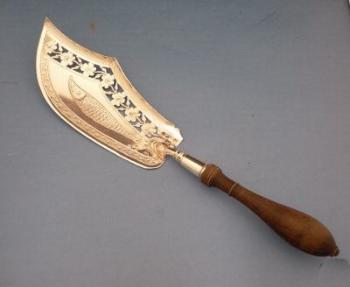
|
FISH SERVER
|
"A SILVERSMITH per MONTH"
In this column
we present marks, information and history of silversmiths and
silver manufacturers.
This column is published under the kind permission of Giorgio
Busetto's website


HENRY WILKINSON & CO LTDIt is difficult to trace
the origin of the firm in the 18th and the first part of
the 19th century, owing to the complexity of intertwined
partnerships involving the numerous firms active in
Sheffield in the silver business. The Chronology until
1829 is only a hypothesis largely based on Frederick
Bradbury's book on Old Sheffield Plate (first published
in 1912).
|
"A BOOK ON MY SHELF"
In this column we present books, new
or ancient, dealing with silver in all its aspects (history,
marks, oddities...). This isn't a "book review" but only a fair
presentation of some useful "tools" that anyone may have in the
shelf of his bookcase.
ASCAS members are invited to contribute to this column
(click to enlarge images)
In the "book on my shelf" of this month ASCAS presents:

Custom Search
Closing our November 2011 edition of ASCAS Newsletter I hope you have appreciated its content.
Your comments, suggestions and advice will be of great help.
My thanks to Dorothea Burstyn, Craig Hart, Jeffrey Herman, Samuel Hough, Julio P. Marini, David McKinley, Pietro Rampazzo, Steve Roberts, Vladimir, Joanne Wiertella, Michael Wink, Oskar M. Zurell for their invaluable contributions.
Giorgio Busetto
Secretary
ASCAS is a community of people having a common
interest in antique silver.
|

